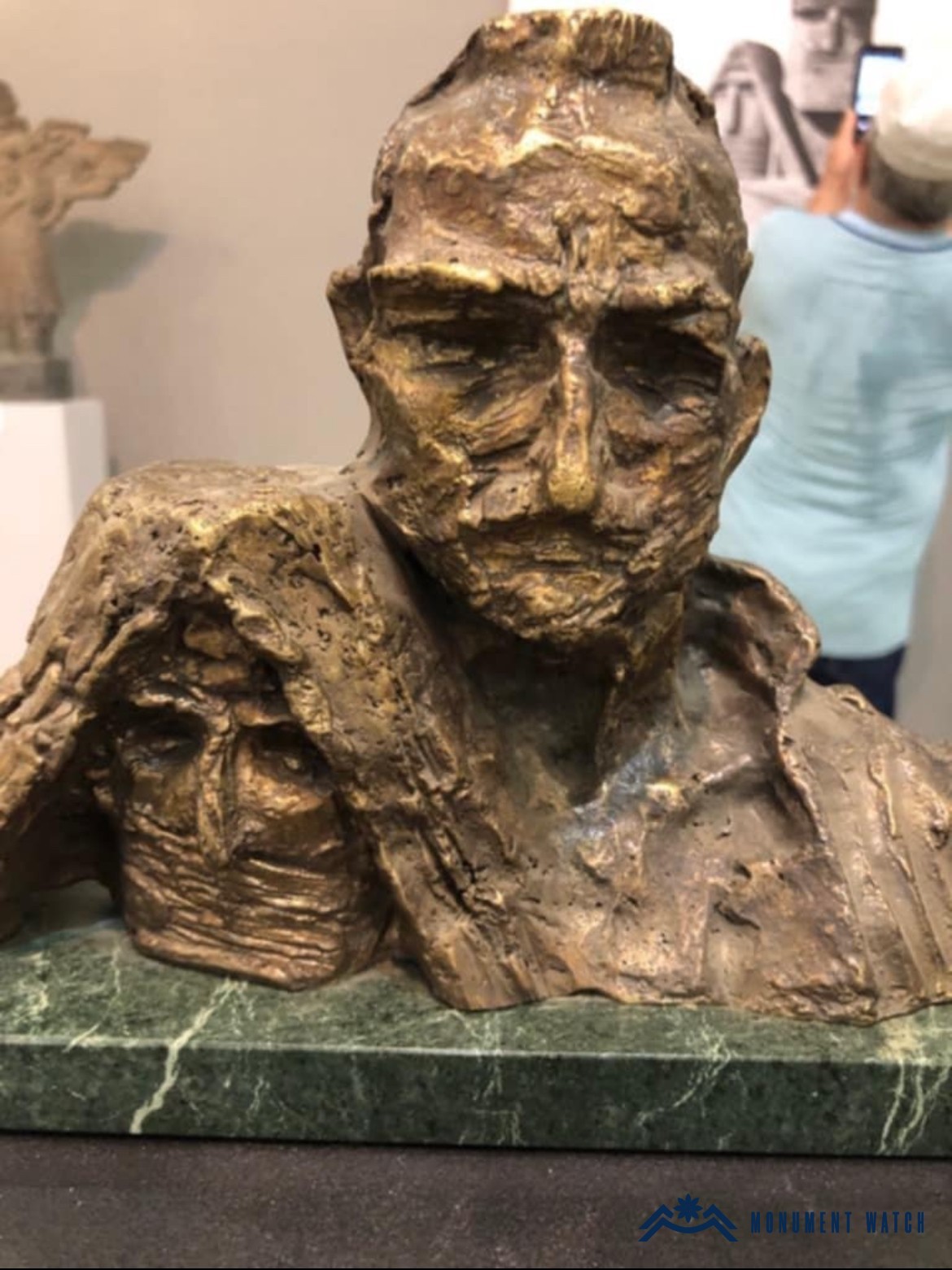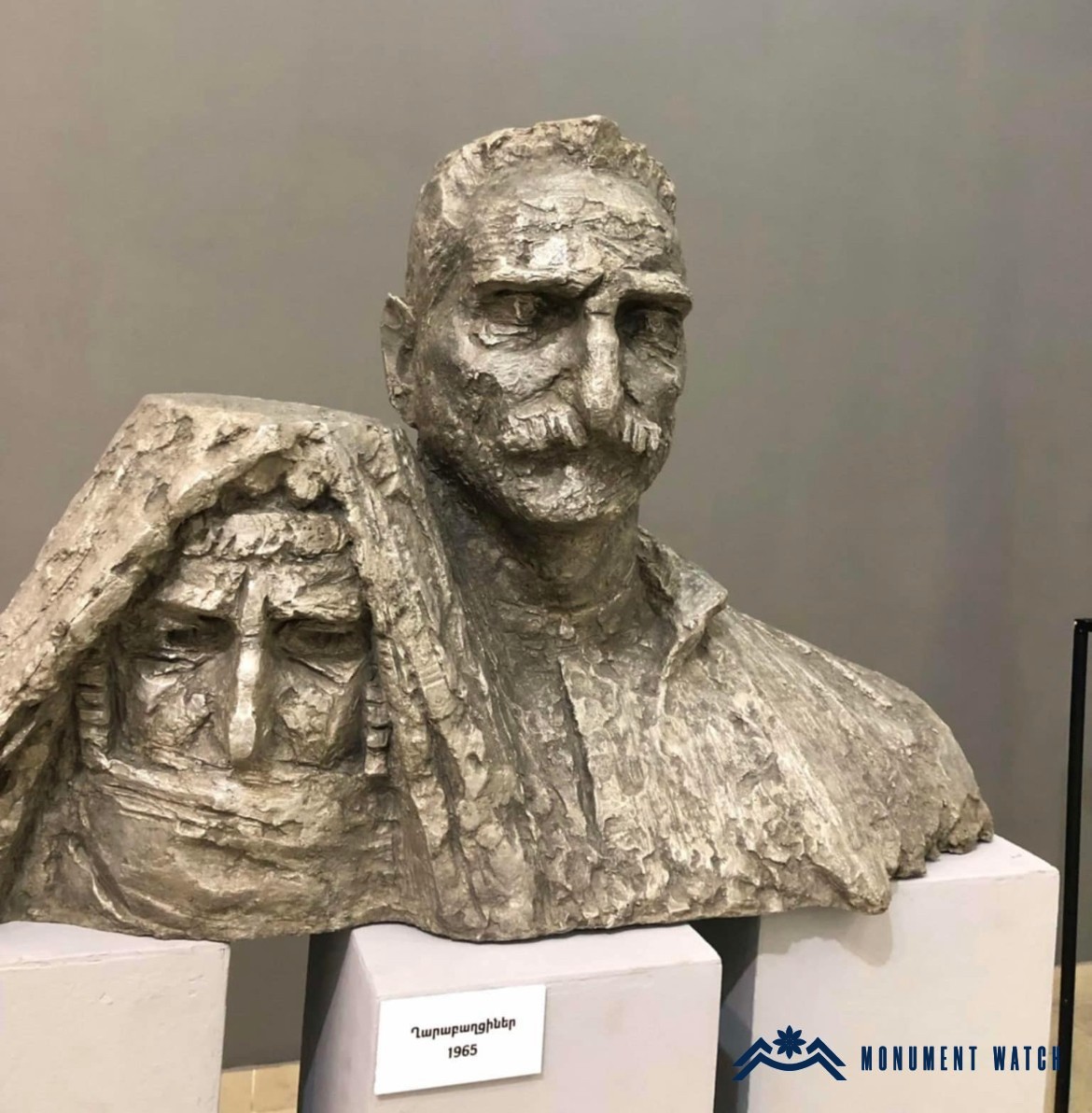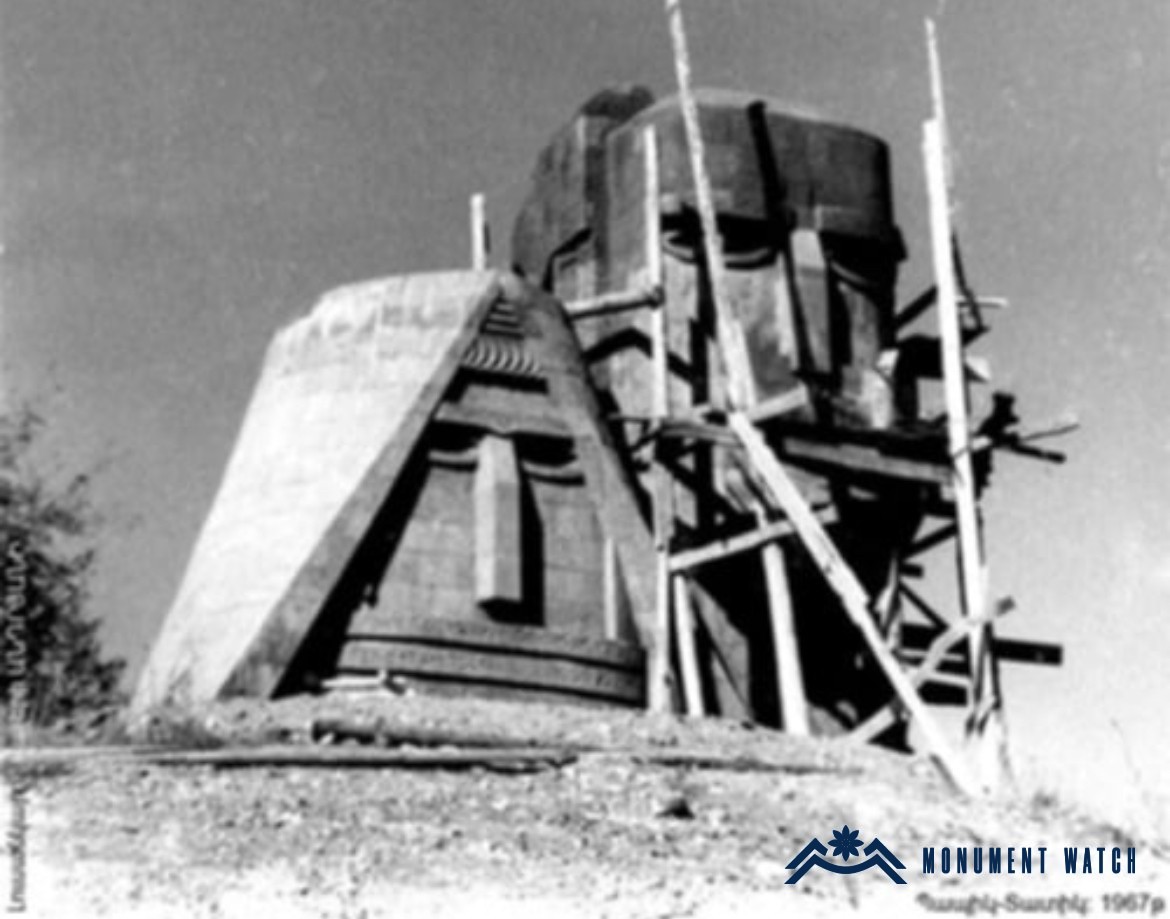“We Are Our Mountains” Monument: A Symbol of Azerbaijan’s National-Religious Tolerance?
A few days ago, the Azerbaijani website "Culture of Azerbaijan" published a statement about Artsakh's famous monument "We Are Our Mountains" (also known as "Grandfather and Grandmother"), claiming that it was built in the city of Khankendi, Azerbaijan, in 1967 and that it is "one of many examples of Azerbaijan's multicultural and national-religious tolerance "(https://www.facebook.com/tigrankhzmalyan/posts/pfbid02ZyTm7BsCFr3m9e5uvf14EzosfVM6erFGiJm2WsqNrd4hRjnscnjxTbiM1arfWTmTl).
It is a well-known fact that the "We Are Our Mountains" monument is one of the modern symbols of Armenian Artsakh, created as a powerful sign and symbol of the Armenian identity of the region. The depiction of the elderly couple, with their traditional attire and demeanor, serves as a testament to the historical past and future aspirations of the Artsakh Armenians—hopes that have been tragically challenged by Azerbaijan's ongoing policies of hostility towards Armenians. The monument, crafted from red tuff specially brought from Armenia, was sculpted by Sargis Baghdasaryan, with Yuri Hakobyan as the architect. Baghdasaryan described his work as follows: "The monument represents elderly Artsakh spouses in traditional costume, standing shoulder to shoulder with a proud and unyielding attitude and a serious gaze. The monument lacks a pedestal, but it appears as though the mountain itself has split open, allowing them to rise from within and stand firmly planted in the Armenian soil." Notably, the elderly couple depicted in the monument were modeled after the sculptor's grandparents, who were born in Artsakh. "They are the people, they are the land, they are us—our mountains. These people were born here, their thousand-year-old roots are here, and they are the true owners of this land and nature," Baghdasaryan wrote (Sargis Baghdasaryan's "Karabakh people", https://www.youtube.com/watch?v=_444zBj6OKM).
After the complete occupation of Artsakh, the official Azerbaijani authorities largely refrained from addressing or altering the "We Are Our Mountains" monument for an extended period. Despite being the most prominent and renowned symbol of the Artsakh Armenians, the monument was conspicuously ignored and "overlooked" by Azerbaijani journalists and media figures visiting the occupied city of Stepanakert. Only a few news outlets expressed opinions suggesting that the monument should be demolished (https://bizim.media/az/siyaset/157989/https://bizim.media/az/siyaset/157989/xankendideki-biz-ve-bizim-dalar-abidesi-sklmelidir-partiya-sedrlerinden-aiqlama/). In 2023, a few publications emerged claiming that Armenians had "Armenianized" the monument. The Azerbaijani side attempted to propagate the idea that they were not opposed to the monument itself, but rather to its "ideological nationalist interpretation" (https://respublika-news.az/az/news/biz-ve-bizim-daglar-ezemetli-azerbaycana-baxacaq). From Azerbaijani publications, it can be inferred that during the Soviet years, any expression related to the Armenians' history, culture, and roots in Nagorno-Karabakh was labeled as "nationalist."
Recently, Kyamran Razmovar, while reporting on occupied Stepanakert, specifically highlighted this monument, emphasizing that it was erected during the Soviet era when the Nagorno-Karabakh Autonomous Oblast was part of Azerbaijan. According to him, this implies that the monument was funded by the budget of Soviet Azerbaijan, and therefore, he claims, it should be considered Azerbaijani
(https://www.instagram.com/reel/C9s_qu2I0J3/?igsh=cXJlaWNsOXpyOG1u). These points are significant because the Azerbaijani side, through its pro-government propagandists, has initiated the process of appropriating the monument. The emerging narrative includes claims that the monument was built with funds from Baku, that it is Azerbaijani, and that it represents the tolerance of Azerbaijani authorities towards Armenians during the Soviet years.
It is important to note that the creation of the monument came to life during those years with the direct involvement of Mushegh Ohanjanyan, the chairman of the Executive Committee of the Nagorno Karabakh Regional Council. The leadership of Soviet Azerbaijan was initially opposed to the construction and installation of the monument. There was a formal complaint demanding its dismantling. A special commission from the Central Committee of the Communist Party of Azerbaijan was dispatched to Stepanakert to investigate the monument's title, questioning the meaning behind "We Are Our Mountains" and who the "we" referred to. However, thanks to the persistent efforts of the Armenian side, the monument was ultimately saved from being dismantled. Various individuals who held positions in Nagorno-Karabakh at the time, as well as relatives and associates of Sargis Baghdasaryan, the monument's sculptor, played crucial roles in ensuring its preservation (https://www.youtube.com/watch?v=_444zBj6OKM).
Our response
Azerbaijan's policy towards the monument represents an attempt to usurp and appropriate heritage, not only severing it from its Armenian origins but also trying to craft an image of Azerbaijan as a multicultural and tolerant country. This approach directly contravenes the principles of the UN's 2005 Paris Convention "On the Protection and Promotion of the Diversity of Cultural Expressions" https://en.unesco.org/about-us/legal-affairs/convention-protection-and-promotion-diversity-cultural-expressions. The Convention emphasizes that cultural diversity is a driving force for the sustainable development of societies, peoples, and nations. According to the Convention, "cultural diversity" refers to the variety of ways in which the cultures of different groups and societies find expression. Article 2 of the UN Convention states that the protection of cultural diversity is only possible when human rights and fundamental freedoms are guaranteed. From this, it can be inferred that safeguarding the diversity of cultural self-expression requires respect for all cultures, including those of minorities and indigenous peoples. Moreover, the Convention recognizes culture as one of the key drivers of development. Significantly, the Convention defines "protection" as taking measures aimed at preserving, safeguarding, and promoting the diversity of forms of cultural self-expression.


